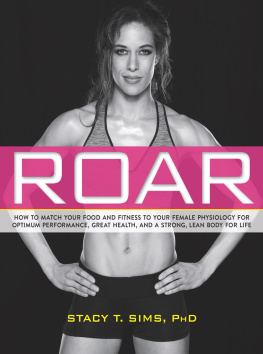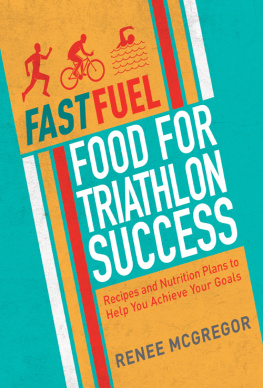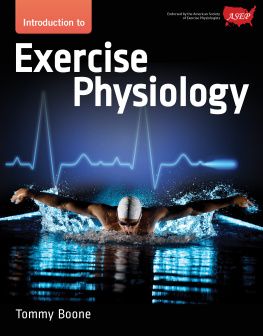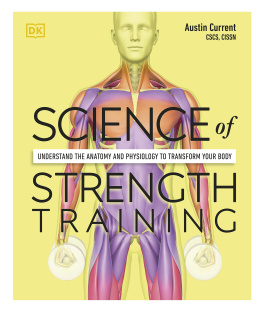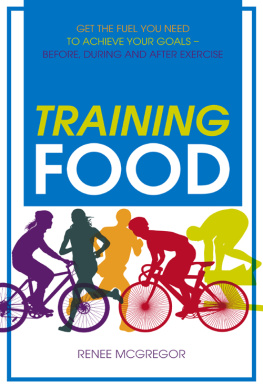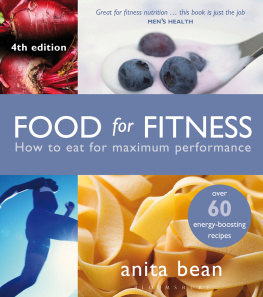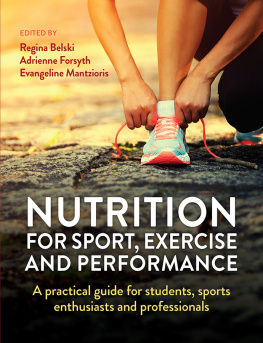This book is intended as a reference volume only, not as a medical manual. The information given here is designed to help you make informed decisions about your health. It is not intended as a substitute for any treatment that may have been prescribed by your doctor. If you suspect that you have a medical problem, we urge you to seek competent medical help.
The information in this book is meant to supplement, not replace, proper exercise training. All forms of exercise pose some inherent risks. The editors and publisher advise readers to take full responsibility for their safety and know their limits. Before practicing the exercises in this book, be sure that your equipment is well-maintained, and do not take risks beyond your level of experience, aptitude, training, and fitness. The exercise and dietary programs in this book are not intended as a substitute for any exercise routine or dietary regimen that may have been prescribed by your doctor. As with all exercise and dietary programs, you should get your doctors approval before beginning.
Mention of specific companies, organizations, or authorities in this book does not imply endorsement by the author or publisher, nor does mention of specific companies, organizations, or authorities imply that they endorse this book, its author, or the publisher.
Copyright 2016 by Dr. Stacy T. Sims and Selene Yeager
Photographs 2016 by Rodale Inc.
All rights reserved. No part of this publication may be reproduced or transmitted in any form or by any means, electronic or mechanical, including photocopying, recording, or any other information storage and retrieval system, without the written permission of the publisher.
All page numbers listed below refer to the print edition.
The RED-S Risk Assessment Model for Sports Participation on pages 3031 is adapted by permission from BMJ Publishing Group Limited, Margo Mountjoy, Jorunn Sundgot-Borgen, Louise Burke, Susan Carter, Naama Constantini, Constance Lebrun, Nanna Meyer, Roberta Sherman, Kathrin Steffen, Richard Budgett, Arne Ljungqvist, volume 48, issue 7, 491-97, 2014.
Brace Yourself on pages 106107 is used with permission from Kelly Starrett and was originally published in Becoming a Supple Leopard, Victory Belt Publishing, April 23, 2013.
The recipes on pages 262266 are used with permission from Hannah Grant and were originally published in The Grand Tour Cookbook, Musette Publishing ApS, June 5,2105 (English ed.).
Illustrations by Paige Vickers
Photographs by Mitch Mandel/Rodale Inc.
Book design by Joanna Williams
Library of Congress Cataloging-in-Publication Data on file with the publisher
ISBN: 9781623366865 paperback
ISBN: 9781623366872 e-book

We inspire and enable people to improve their lives and the world around them.
rodalewellness.com
CONTENTS
INTRODUCTION
You are not a small man.
Stop eating and training like one.
Long before I was a nutrition scientist and exercise physiologist, I was an athlete. I ran. I raced bikes. I competed in triathlons, including the Ironman World Championships in Kona, Hawaii, and XTerra Worlds in Maui, Hawaii. I wish Id known then what I know now.
See, back then, I trained and fueled myself like a man, because thats what everyone did. Sure, I took in fewer calories because I was smaller. But I followed the same progressive training plans, ate the same bars and gels, and raced like a guy. And I suffered because of it. Some races I would feel great. But others, especially those that were in the week or so before my period started, were awful. I wouldnt be able to handle the heat (even though I prepped for it). I got dehydrated. I lost power. I had gastrointestinal issues.
Being a scientific person by nature, I started taking notes on all my races in an attempt to spot trends and get to the bottom of my uneven performance. My initial suspicion was that it was something in my training plan, that I didnt taper right or I didnt have the right level of fitness going into each race.
It never occurred to me that it was actually my physiology working against me. Or more specifically, I was not working properly with my physiology. The breaking point was ending up in the medical tent at Ironman Kona after becoming hyponatremic (low sodium levels in the blood). I distinctively remember riding out to Hawi, the halfway point of the 112-mile bike portion of the course, in winds so intense that I saw a woman about my size get picked up by the wind and dumped into the ditch on the side of the road. Yes, I was freaking out and probably not 100 percent on top of my fueling needs, but I noticed on the way back that I had a low-grade headache and was getting swollen. I knew those were early signs of hyponatremia, so I pulled a couple of Gastrolyte tablets (a glucose and electrolyte combination) out of my pocket and ate them ASAP. Within a few minutes, I had to pee like a racehorse. I then spent the remaining time of the race wondering if and why any of my fellow teammates from New Zealand had similar issues. When the race was said and done, I asked the other Kiwi women how they found the race. What was incredibly interesting was that those of us in the high-hormone phase (a few days out from getting our periods) had borderline hyponatremic issues; two ended up in the medical tent with clinically low blood sodium and on IV drips. My friends who were in the low-hormone phase (day 1 through 14 of your menstrual cycle, starting with the first day of your period) had great races and didnt have any fluid or heat issues, even though we all did the same heat-acclimation protocols and followed the same nutrition protocols! This prompted me to change my PhD topic from altitude to heat and to try to figure out why those of us in the high-hormone phase had experienced such problems.
Thats when I decided to become a biohacker for the female race. I was already living in New Zealand and studying for my PhD in environmental exercise physiology, nutrition science, at the University of Otago, where I had access to a lab, state-of-the-art data analysis systems, and lots of active friends, teammates, and colleagues. With full access to an environmental chamber; core temperature monitoring systems; blood analysis equipment for things such as hemoglobin, hematocrit, fluid balance, and other hormones; a refractometer for urine analysis; and fully supportive PhD supervisors (who are wicked smart!) and lab managers, I went to work researching how hormones impact thermoregulation, macronutrient usage, hydration, performance, and recovery. Right out of the gate, it was apparent that sex differences extend far beyond ponytails and sports bras.
I soon developed what has become my mantra today: Women are not small men. That may seem blatantly obvious, but for ages, thats how most sports-nutrition manufacturers treated us. They simply formulated products that had fewer calories and put them in pretty packages, maybe tossing in extra calcium or a bit of soy protein, and labeled it womens specific. For many years, women got the nutritional equivalent of shrink it and pink it. Thats a huge disservice, and its time to acknowledge, treat, train, and fuel women as the different physiological beings we are.
HORMONE POWER

